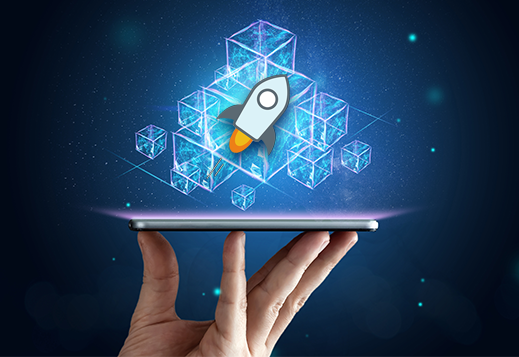Numerous industries, including digital payments, have made significant strides due to the digital transition. On the other side, developments in payment technologies have resulted in significant vulnerabilities in sensitive client data. When digital payments are made, user data is exposed because the data flow via several sites. Thus, tokenization and blockchain have long been viable alternatives to data separation in ecosystems.
Tokens have lately acquired favour in the payments processing sector as a method for concealing credit card information. Moreover, blockchain-based token development has been generating headlines due to its capacity to turn tangible and immaterial assets into digital tokens. What does this signify for blockchain and the future of the world? Using examples, let's examine the definition of tokenization as well as the benefits it provides.
What exactly is tokenization?
The introduction of blockchain has revolutionized the asset investment process. How? You've been searching for a method to tokenize your data, and you've found it through transforming an asset's ownership rights into a digital token. A $200,000 residence, for instance, might be converted into 200,000 tokens, with each token representing approximately 0.0005% of the apartment's value.
To put it another way, a blockchain token is a digital representation of complete or shared ownership of any business with a predetermined value. The two most prevalent use of blockchain tokens are payments and transaction settlement between participants. Token development can also represent multi-party ownership of indivisible assets like artwork and music videos. Tokens also facilitate the ownership transfer of inseparable assets across a blockchain network.
The combination of tokenization and blockchain can offer new potential for enhancing multi-partner business processes and creating new business models.
Utilization of Tokenization
Given the definition, you are likely curious about the technology's operation. Understanding tokenization and its operation could help you determine the size of tokens.
As implied by the phrase, tokenization is the process of converting indivisible assets into tokens. However, numerous assets are difficult to divide and transport across the globe. Consequently, you will want a deeper grasp of the many assets that can be converted into tokens.
Intangibles
Without a physical representation, intangible assets exist solely based on legal precedents. Examples of intangible assets are copyrights and patents. When tokenizing intangible assets, it is crucial to guarantee that the blockchain network's asset transfer mechanism matches the real-world transfer paradigm. Intangible assets are ideal candidates for tokenization since they do not require storage or shipment. In contrast, jurisdictional disparities might make the transfer of tokens representing intangible assets extremely challenging.
Fungible Assets
Fungible assets can be exchanged for similar alternatives. Examples of fungible assets are wheat and gold. Because fungible assets are easily divisible, they are simpler to transform into tokens. A single token may also represent a group of fungible assets, such as a stack of gold. The tokenization strategy for fungible assets must include an abstraction layer. A group of tokens is associated with a group of interchangeable asset components.
Non-fungible Assets
Non-fungible assets are assets that cannot be separated into smaller parts. Tokenization permits the division of non-fungible assets into digital shares that can be traded in whole or part. The artwork and real estate tokenization examples demonstrate that non-fungible assets can be tokenized.
Adopting an immutable digital signature is the first step in transforming artwork into tokens. The digital signature or token represents and verifies the originality of the artwork. They may then be decomposed into smaller, digitally signable sub-tokens and then can be sold as part of the original artwork.
The Technological Basis of Tokenization
Smart contracts, also known as token contracts, are crucial to developing tokens. Token contracts are programmes that facilitate the establishment of rules and the movement of cryptocurrency from one wallet to another. Notably, UTXO and account-based models are the most prevalent intelligent contract deployment solutions.
Since the debut of Bitcoin, UTXO has become a popular alternative for numerous cryptocurrencies. Account-based architectures are acceptable for Ethereum and Hyperledger Fabric networks. In the account-based design, a global state database allows you to track the token or asset's current status at any given time. Moreover, the transaction balance would be specified as the token's current state.
Reasons for the Expansion of Tokens Based on Blockchain
After a comprehensive examination of the fundamentals of tokenization, such as its definition and practical uses, it is time to examine the conditions that led to its origin. Here are a few of the most important arguments to help you answer the question "what is the purpose of tokenization?" in straightforward language.
Operational Productivity
One of the most significant benefits of tokenizing blockchain applications is enhanced operational efficiency. Tokens simplify IT systems and the sharing of infrastructure among participants without the need for a centralized third party. As a result, transaction costs may be drastically lowered.
In addition, automating manual tasks and eliminating a portion of the compliance or reconciliation process may help reduce inefficiencies. Tokenization of assets also facilitates the automation of transaction settlements and clearance, resulting in speedier transactions. Consequently, you may be able to increase the overall efficiency of transaction administration.
Asset Distribution
Increasing liquidity by converting assets into fractions while keeping ownership of fractions of assets. Taking measures to reduce barriers to asset investment may encourage more individuals to invest. Tokenization algorithms may aid sellers in previously illiquid marketplaces in completing transactions.
Tokens can express support for inclusive financing. Investors who do not use an intermediary may have access to previously unavailable investment possibilities due to high minimum investment requirements, a lack of infrastructure, or geographical constraints.
Using tokenization blockchain systems, an investor's location may be irrelevant regarding access to financial markets and several new types of assets. Intriguingly, if tokens are utilized, investing in assets may become more straightforward with significant reductions in required minimum capital.
The introduction of tokens also promotes the concept of shared ownership. In shared ownership, multiple individuals can acquire and utilize a single thing. This principle of separating ownership is crucial when consumption has eclipsed ownership's importance. For instance, a small group may pool their finances to buy a vacation home and agree on who will use it each week.
Transparency
Transparency is one of blockchain's benefits. Since blockchain is transparent, all transactions on a blockchain network are accessible to all network participants.
In the case of tangible assets, transparency facilitates improved tracking and increases confidence in the asset's provenance and ownership. Therefore, tokenization can deliver substantial benefits in reducing the identification of ownership of a given object and its related ownership chain.
However, tokenization in blockchain applications does not guarantee absolute transparency. For specific goals, transparency is not universally accepted in many businesses. In the asset management market, transparency is a challenging notion to grasp, particularly when competitors share infrastructure. In certain circumstances, implementing privacy-enhancing technologies to avoid disclosing sensitive data may be a prudent course of action.
Unique Source of Veracity
Establishing a single source of truth is the next essential step in ensuring the spread of tokenization blockchain applications. Organizations acquire a vast number of data for each asset. It is increasingly challenging to map and connect data points such as intellectual property rights, licences, product ownership, and specific rights. Consequently, a collection of fragmented data points regarding an asset may result in unintended outcomes.
Through the use of tokenization, blockchain establishes a single layer of trust. Business partners or competitors may be able to communicate data collected because of the trust layer. Multiple ecosystem participants may find it easy to interact with a single digital depiction of a particular thing. As a result, it can boost the efficiency of the entire value chain while also introducing novel forms of collaboration.
Numerous trade finance projects have proved that tokenization may serve as a single source of truth. The programmes have enabled firms to communicate information regarding globally transferred assets. Using smart contracts, tokenized assets may facilitate the automation and simplification of high-volume trade.
To Summarise
The economic benefits for companies that decide to tokenize their assets are just one of the many factors fueling the emergence of digital tokens. One can easily evaluate tokenisation's advantages with a thorough understanding of tokenization and how it works. Transparency can aid businesses in enhancing physical product traceability, expediting IT operations, and facilitating ICO Development Services.
Most importantly, blockchain-based digital currencies have the potential to provide consumers with substantial benefits. People may now own assets that were previously inaccessible due to capital limits.






Comments